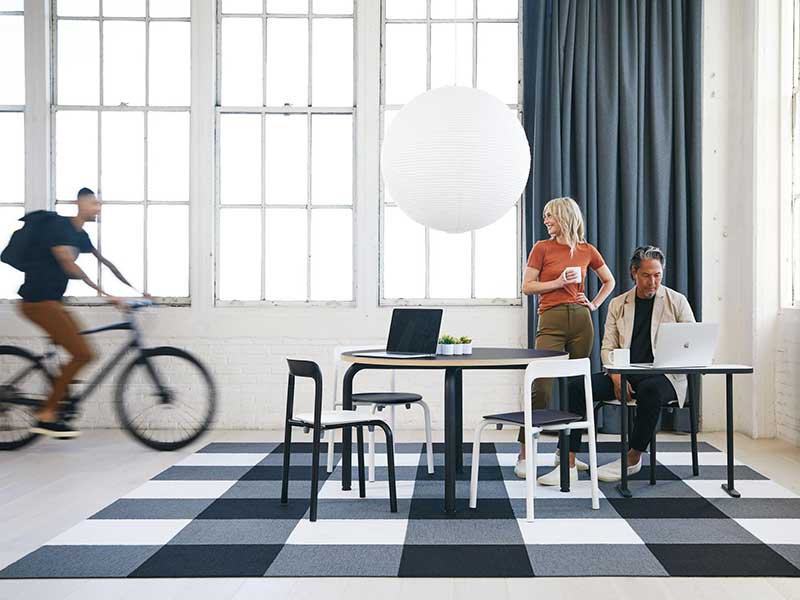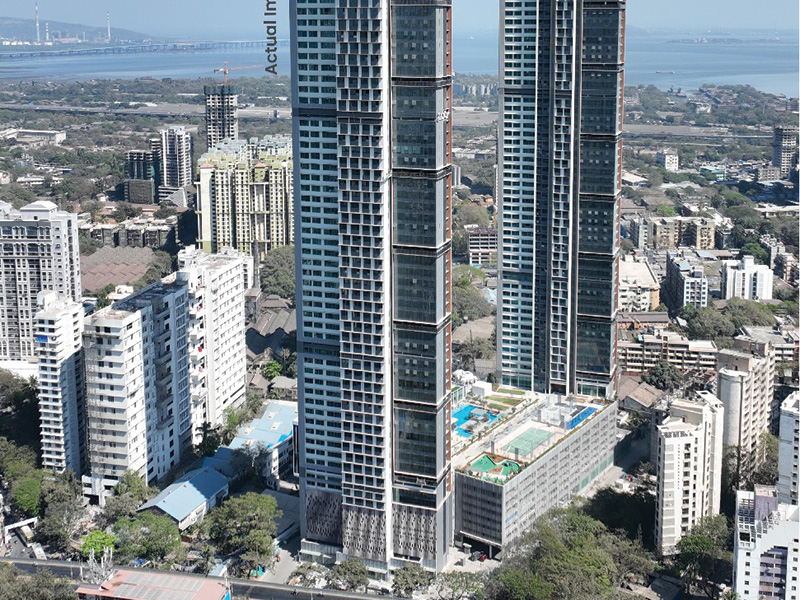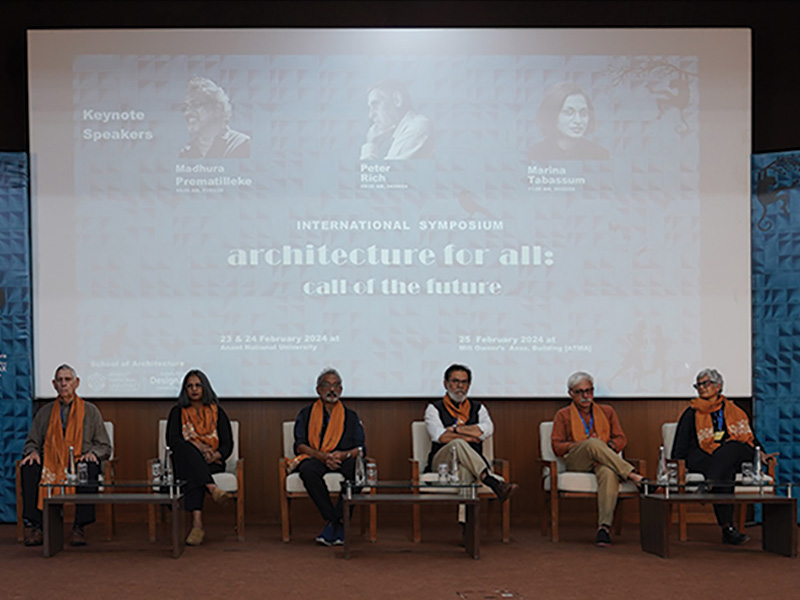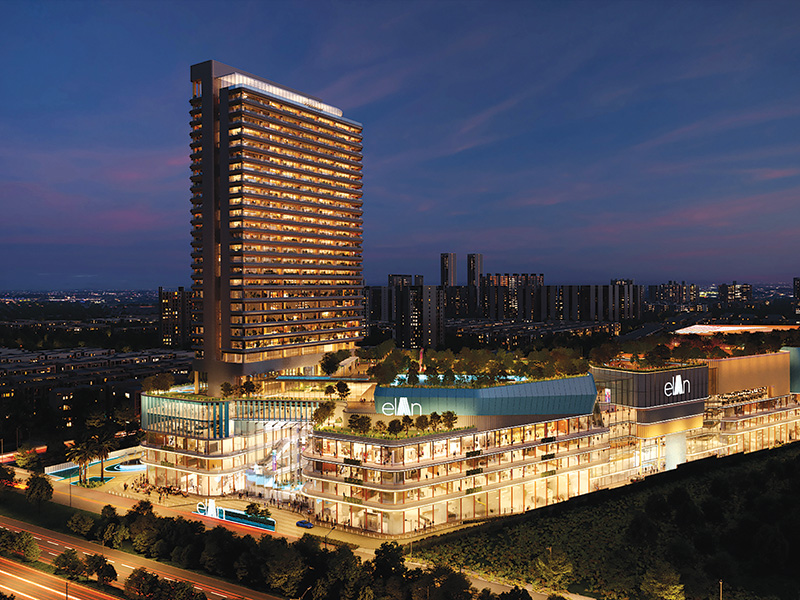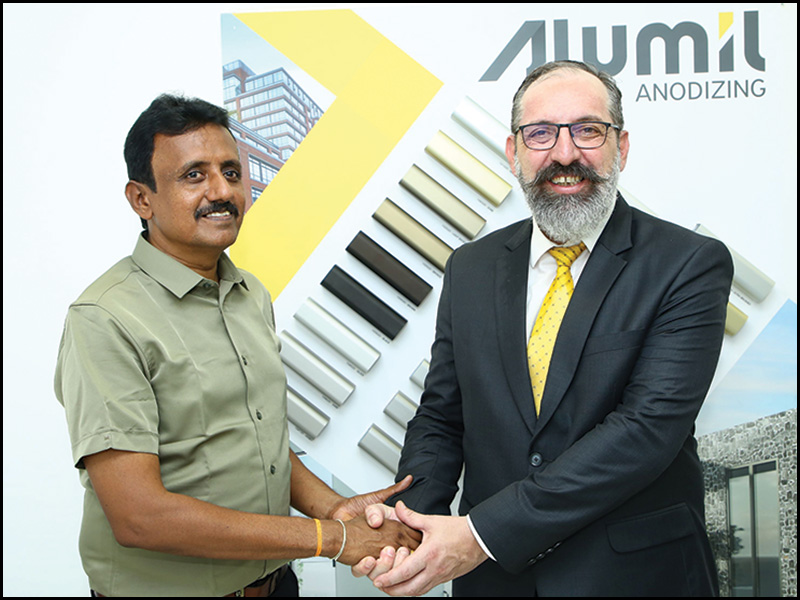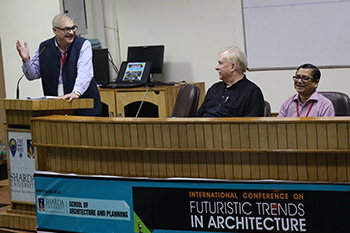
The event began with the welcome address of Dean SAP Dr. Shovan K. Saha, who thanked the eminent speakers for their presence. The gathering comprised of renowned architects from all over the country, freely interacting with young students. Following the welcome address, Head of the department SAP, Prof. S.N. Segal delivered the introductory note for the conference.
Prof. Chetan Vaidya, Director of School of Planning & Architecture (SPA), Delhi, delivered the inaugural address. The issue of sustainable architecture was intensely discussed and Pro Vice Chancellor of Sharda University Prof. Ranjit Goswami, enlightened the gathering with his vision on the subject.
Prof. Chetan Vaidya kick started the technical session, which was followed by one of India's most acclaimed architect and urban planner Prof. Christopher C Benninger’s session on the main topic, ‘Vision of the World’. The session covered climate change, resource constraints, insecurity concerns, affinity for traditions, mechanization of skills & processes, and above all, every architect’s inherent dream to be viewed as master creator. Prof. Manoj Mathur, Head of the Architecture Dept. at SPA, New Delhi, discussed at length on the subject of ‘Critical Determinants of Futuristic Architecture and their Management’. 7 research papers on the subject were presented during the afternoon session, guided by Prof. Desh Bandhu’s able moderation.
Stressing on the need for India to focus on sustainable living, Prof. Chetan Vaidya, Director of School of Planning & Architecture (SPA), Delhi said, “We live in a country which is densely populated and diversified in culture. People of different communities and religions live this country and several elements of the country’s diverse culture is displayed or reflected in the architectural styles. There can’t be one common size that fits all in an overpopulated country like ours. Amidst the rapid growth in urbanization, there is a dire need for sustainable planning, innovative and eco-friendly solutions. Energy-efficient buildings and open spaces can keep people happier and healthier, as it allows them to connect with nature on a regular basis.”
The extremely talented architect and author of ‘Letters to a Young Architect’, Christopher Benninger said, “Being an architect is a profession which envisions future that combines development and innovative solutions. In my recent work 'Livability', I have focused on how around 70% of people who work in the informal sectors are unable to avail the basic facilities of food, clothing and shelter. In my project called 'India House' I have made use of simple and traditional materials that are environmentally sustainable and employ cultural continuity in the most modest manner to achieve a solution to a complex building program. Let us all remember to try out new, innovative and environment friendly solutions and keep learning to adopt new principles in the field of architecture for the rest of our lives."
In the final session, Professor Manoj Mathur introduced students to a massive open online course (MOOC) which was created to help students make use of innovative digital technologies and connect to teachers in their own comfort zone. Describing the contents of the virtual course, Prof. Manoj Mathur, Head of the Dept. SPA, New Delhi said, “As societies evolved through centuries from one ecological pattern to the next, architects were confronted with new sets of determinants. As future architects, we need to bring in sustainable changes as per the needs of the people and their place of stay. We need to redesign the space with the concept of compaction, contextualization and communication. Among the plethora of determinants, architects would need to skillfully scrutinize and recognize the relative importance of each element. They would also need to visualize the sum result of their various combinations that would optimally fulfill the requirements of functional efficiency, sustainability and aesthetic sensibility.”

